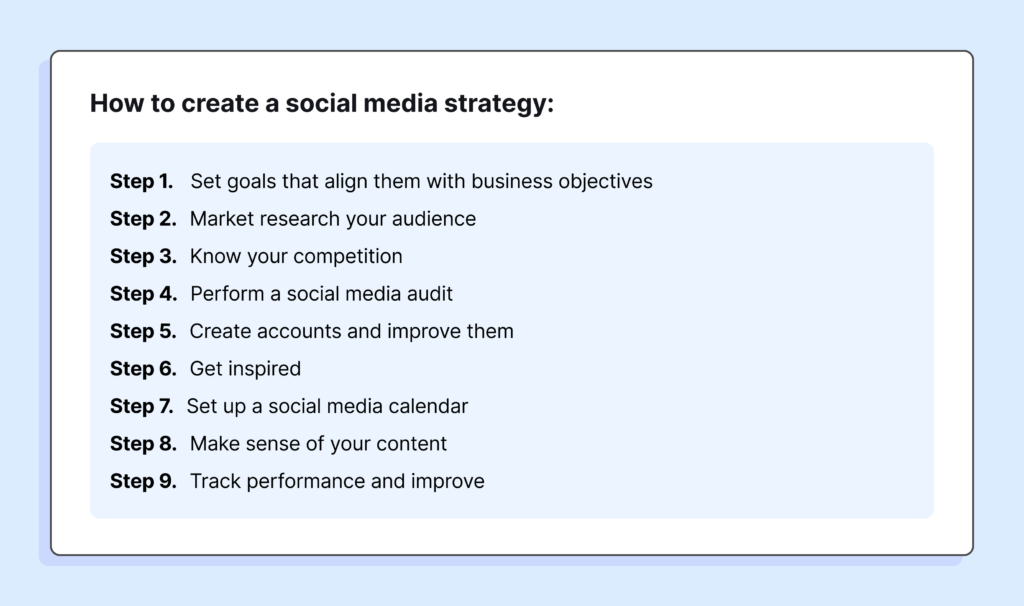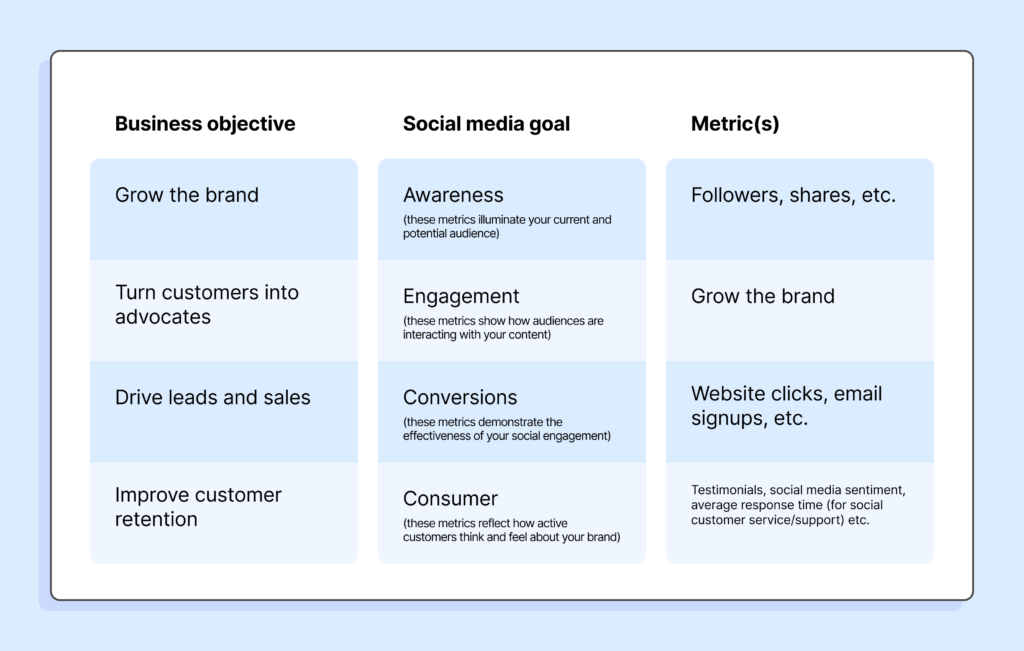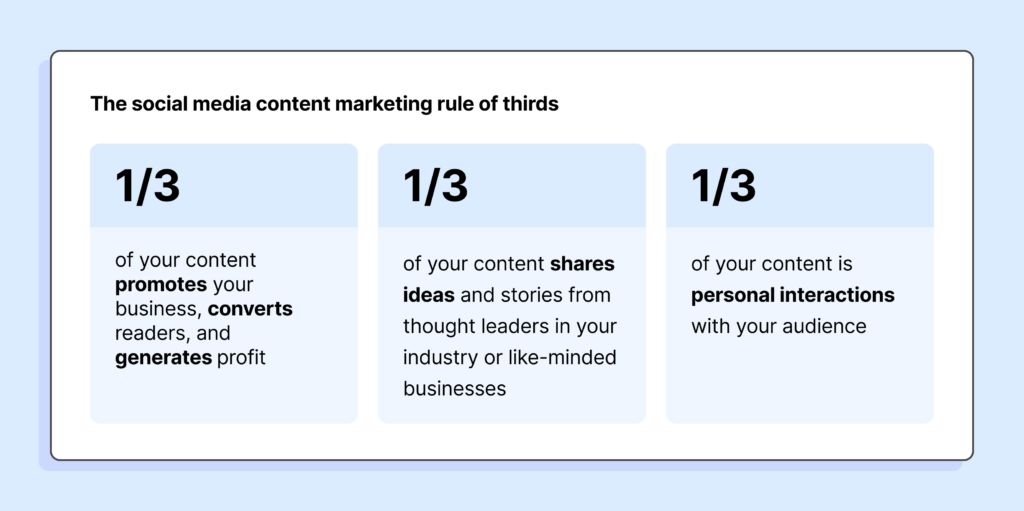A social media marketing strategy is a synopsis of everything you intend to do and expect to accomplish on social media. It directs your behavior and informs you of your success or failure.
The more explicit your strategy, the more effective it will be. Keep it brief. Make it as lofty and broad as possible without becoming unreachable or difficult to quantify. In this piece, we’ll lead you through a nine-step process for developing your own winning social media strategy.

What is social media marketing?
Social media marketing is the activity of utilizing social media platforms to sell or promote a brand, product, or service.
What social media marketing does to knowledge businesses:
- Boost brand awareness
- Create active communities.
- Provide goods and services for sale.
- Assess brand opinion and offer social customer service
- Promote products and services to specific audiences.
- Monitor results and change bigger marketing plans as needed.
A social media strategy is a document that outlines your social media goals, techniques for achieving them, and metrics for measuring success. Your social media marketing strategy ought to contain a list of all of your existing and planned social media accounts, as well as targets for each platform on which you are involved. Your business’s overall digital marketing strategy should be consistent with these objectives. Finally, a strong social media plan should clarify the roles and duties within your team and outline your reporting cadence.
How to create a social media marketing strategy in 9 easy steps
Step 1. Set goals that align them with business objectives
Create S.M.A.R.T. objectives. The first step in developing a successful social media strategy is to identify specific objectives and targets. Without goals, you can’t quantify success or return on investment. Each of your social media marketing objectives should be SMART: specific, measurable, attainable, relevant, and time-bound.

Keep track of important indicators. Vanity metrics like the number of followers and likes are easy to measure, but it’s difficult to verify their true worth. Instead, concentrate on metrics like engagement, click-through, and conversion rates. You may wish to track distinct goals or usage for multiple social media networks.
Click-throughs, for instance, would be measured if you used LinkedIn to generate visitors to your website. If Instagram is used to raise brand recognition, you should keep track of the amount of Instagram Story views. Cost-per-click is a frequent performance statistic for Facebook advertising. Your entire marketing objectives should be consistent with your social media aims. This makes it easy to demonstrate the worth of your job and gain approval from your manager.

Step 2. Market research your audience
Get to know your fans, followers, and customers as genuine individuals with real desires and needs, and you’ll know how to target and engage them on social media. When it comes to your ideal consumer, you should be aware of factors such as age, location, average income, usual work title or sector, interests, and so on.
Social media analytics may also reveal a wealth of information on your followers, including where they reside and how they interact with your company on social media. These insights enable you to fine-tune your strategy and better target your audience.
Jugnoo, an Uber-like business for auto-rickshaws in India, used Facebook Analytics to discover that 90% of their users who recommended other customers were between the ages of 18 and 34, with Android accounting for 65% of that category. They used the knowledge to focus their adverts, resulting in a 40% cheaper cost per referral.
Step 3. Know your competition on social media platfroms
Your rivals are probably already utilizing social media, which means you can learn from what they’re doing. Perform a competitive analysis. A competitive study enables you to learn who your competitors are and what they do effectively (and not so well). You’ll gain a clear feel of what’s required in your business, which can help you define your own social media goals.
It will also assist you in identifying opportunities. Perhaps one of your competitors is strong on Facebook but has put little effort into Twitter or Instagram. Instead of trying to entice followers away from a dominating player, you could opt to concentrate on the social media sites where your demographic is underserved.
Make use of social media listening. Another way to keep an eye on your competitors is through social listening. Perform social media searches for the competition’s firm name, account handles, and other relevant keywords. Discover what they’re saying and what others are saying about them. How much engagement do their influencer marketing strategies generate?
As you track, you may see changes in how your rivals and industry leaders use social media. You can come across some fresh and fascinating trends. You could even notice specific social content or a campaign that either succeeds or fails spectacularly. Utilize this data to improve and develop your own social media marketing strategy.
Step 4. Perform a social media audit
If you’re already utilizing social media, evaluate your progress. Consider the following:
- What works and what doesn’t?
- Who is conversing with you?
- What are your most valued partnerships?
- Which social media platforms does your target audience use?
- How does your social media presence stack up against the competition?
After you’ve gathered the data, you’ll be able to start thinking about methods to improve. Your audit should provide you with a clear picture of the objective of each of your social profiles. If the purpose of an account is unclear, consider whether it is worthwhile to preserve it. Addressing these difficult questions will keep your social media strategy focused.
Ask yourself the following questions to help you decide:
- Are my clients here?
- If yes, how are they making use of this platform?
- Can I utilize this account to help me attain my objectives?
Check for impostor accounts. Throughout the audit, you may come across fraudulent accounts that use your business name or the names of your items. These imposters may be detrimental to your brand, not to mention that they are stealing your following. You should also get your accounts verified so that your admirers know they are dealing with the genuine you.
Step 5. Create accounts and improve them
Choose which networks to utilize. You will need to describe your strategy for each social network as you pick which ones to use. Small firms may not be able to tackle every platform, but larger businesses can and do. Make sure your marketing team has the tools to manage content for the social networks that will have the most impact on your business.
Create your profile. It’s time to establish your profile once you’ve determined which networks to focus on. Or update existing ones to line with your strategy.
- Fill out all of the profile fields.
- Add keywords that consumers might use to find your business.
- Employ similar branding across networks to make your profile instantly recognized.
Step 6. Get inspired
While it is critical that your brand be distinctive, you may draw inspiration from other businesses that are successful on social media. Who do you like to follow on social media? What do they do to get people to interact with and share their content?
National Geographic, for instance, is one of the finest on Instagram, mixing amazing photos with interesting commentary. Then there’s Shopify. The eCommerce company promotes itself on Facebook by displaying client testimonials and case studies. And Lush Cosmetics is a perfect example of excellent customer service on Twitter. They use their 280 characters to answer queries and solve issues in a delightful and on-brand manner.
Step 7. Set up a social media calendar
Posting great content is key, but it’s also critical to have a strategy in place for when you’ll distribute content for the best effect. Your social media content plan should account for the time you spend connecting with your audience, but you should also allow for some spontaneous participation.
Set your posting schedule. Your social media content schedule outlines the days and hours when you will publish different sorts of content on each channel. It’s the ideal spot to organize all of your social media activity, from photos, link sharing, and re-shares of user-generated content to blog entries and videos. It comprises both your regular blogging and content for social media initiatives.
Choose the appropriate content combination. Make sure your content strategy and schedule follow the mission statement you’ve allocated to each social profile so that everything you publish supports your business goals.
You might choose that:
- 50% of the content is to drive traffic
- 25% of the content is to be curated from other platforms
- 20% of the content is to support lead-generation
- 5% of the content is to be about a business itself
If you’re starting from scratch right now and you’re not sure which types of content you should post, try the 80-20 rule:
- 80% of posts should inform, educate, or entertain your following
- 20% should directly promote your business
Another option is to try the social media content (SMM) marketing rule of thirds:
- 1/3 of content promotes the business, converts followers, and generates income
- 1/3 of the content shares ideas relevant to your business or from like-minded businesses
- 1/3 of the content is dedicated to personal interactions with the audience

Avoid posting too frequently or seldom. If you’re developing a social media marketing strategy from the beginning, you might not know how frequently to post to each network for optimal interaction. Publish too frequently and you risk irritating your readers. Yet, if you publish seldom, you risk appearing unworthy of following.
Social media posting frequency:
- Instagram: 3-7 times/week
- Facebook: 1-2 times/day
- Twitter: 1-5 times/day
- LinkedIn: 1-5 times/day
Step 8. Make sense of your content
Remember the mission statements you developed in Step 5 for each channel? Now it’s time to delve a little further, i.e. present some samples of the sort of content you’ll post on each network to meet your purpose.
The idea here is the following:
- Maintain content that is relevant to the objective of each network
- Show other stakeholders what type of content they may anticipate seeing on each network
For instance, if you’ve designated Twitter largely for customer assistance, you wouldn’t want to waste time producing brand awareness tweets. And you wouldn’t want to send very polished corporate video commercials to TikTok, where people expect to see short, unpolished films. It may take some time to discover which sort of content performs best on whatever type of network, so be prepared to update this area periodically.
Step 9. Track performance and improve
Your social media marketing strategy, or SMM, is a critical document for your business, and you can’t expect to get it right the first time. When you begin to implement your strategy and track your achievements, you may discover that certain techniques do not perform as well as you thought, while others work far better than you imagined.
Examine the performance metrics. In addition to the statistics provided by each social network, you may utilize UTM parameters to follow social visitors as they navigate your website, allowing you to determine which social postings attract the most traffic.
Reevaluate, test, and repeat. As once data begins to arrive, utilize it to frequently reevaluate your strategy. You may also utilize this data to compare various postings, social marketing initiatives, and methods. Continuous testing helps you to discover what works and what doesn’t, allowing you to fine-tune your social media marketing strategy in real-time. To evaluate your progress over time, you should monitor the performance of all your channels at least once a week and learn the fundamentals of social media reporting.
Finishing with your social media strategy
Warning: nothing is final. On social media, things happen quickly. New networks arise, while others see demographic upheavals. There will be times of transition for your business. All of this implies that your social media marketing strategy should be a dynamic document that you analyze and update as necessary. Return to it frequently to keep on track, but don’t be reluctant to make adjustments to reflect new objectives, tools, or plans.
 Open Sesame: 225 Engaging Email Subject Lines + Crafting Tips
Open Sesame: 225 Engaging Email Subject Lines + Crafting Tips








